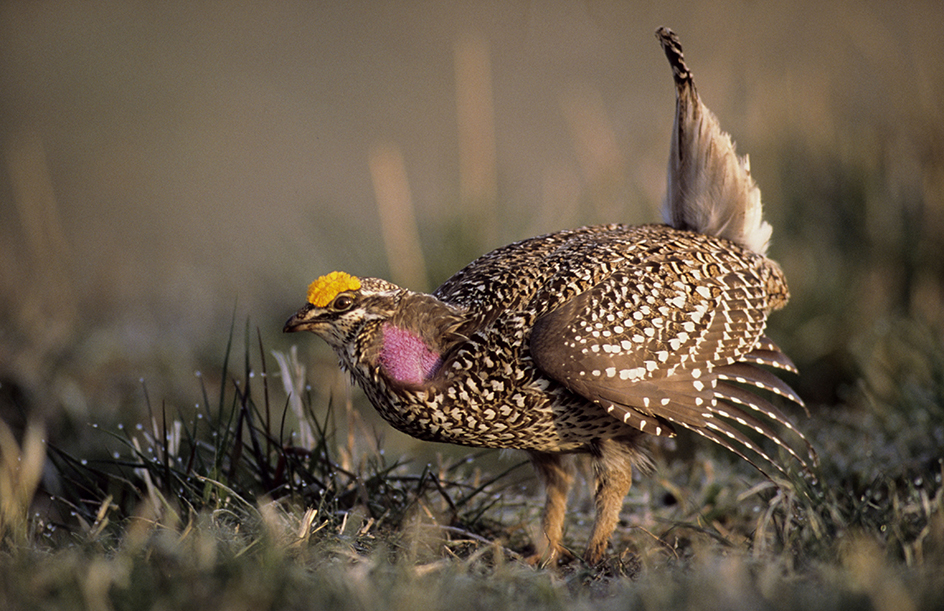Sharp-tailed grouse is a chickenlike bird with a short, sharply pointed tail. It is found throughout much of Canada and in parts of central Alaska and the north-central United States. It lives mainly on prairies and in parklands and open woodlands. Its feathers appear spotted brown and white. Dark, V-shaped markings cover its pale underside, and yellow coloring occurs above its eyes. The male has purplish sacs of skin on the sides of his neck that distinguish him from the female. The sharp-tailed grouse measures from about 16 to 19 inches (41 to 48 centimeters) long. It is the provincial bird of Saskatchewan.

In spring, male sharp-tailed grouse establish group breeding grounds called leks where they dance to attract the females. During the courtship display, the male stamps his feet rapidly, lowers his head, raises his tail, and spreads his wings. The purple sacs on his neck inflate with air, which produces a low, booming sound when released through the mouth. The dominant males occupy the center of the lek, and most of the females mate with them.
After mating, the female sharp-tailed grouse nests alone. The nest consists of a shallow hollow in the ground lined with grasses and other plants from the surrounding area. The female usually lays 10 to 12 eggs but can lay from 5 to 17. The eggs appear light to dark brown, speckled with reddish-brown or lavender.
Although they eat some insects during the spring, adult sharp-tailed grouse feed mainly on plant buds, flowers, fruit, leaves, and seeds. Young sharp-tailed grouse rely primarily on worms and insects and shift to a diet of plants as they mature. In winter, sharp-tailed grouse move from open grasslands to wooded areas within their breeding range.
